Airhead alternators
Here's a brief history of the evolution of the Airhead charging system. A lot of the parts mentioned have been superseded by later (improved) parts, so you will not be able to buy everything that's listed. Also, the supersessions in the parts fiche do not accuratly represent how the bikes were originally equipped. ETK is a list of current parts, not a historical review.
Evolution of the charging system
/5
The /5 had a 180W charging system comprised of the following:
- Rotor with 73.4mm OD and 6.9 ohms resistance
- Stator with 0.6 ohm windings and 105mm mounting diameter
- Diode board, 15A, Bosch 0 197 002 001
- Voltage regulator, Bosch 0 190 601 006 AD1 14V
- 105mm timing cover
This was mostly a unique system, with less efficient rectification. The rotor, stator and diode board are specific to the /5, and all have been superseded by the later parts.
The real distinguishing feature of the /5 alternator is that the stator lacked a center tap, or Y terminal, and the diode board lacked a corresponding input. The center tap extracts additional current from the common point in the three stator windings. By using a 1974 105mm stator with Y terminal and a later diode board with that terminal, you get increased output. The visual difference on both parts is shown later on.
'74~'75
In '74 the system was expanded to 260W. The stator was redesigned with a center tap for the three windings (which fed to the diode board) and the rotor winding resistance was decreased to 3.4 ohms. This stator is the only one available for '70-'75 bikes. There were two stators; the R90S had a stator with more internal clearance for the rotor.
Current /6 parts:
same winding as /5
same complete alternator
same diode board
same regulator
12 31 1 244 642 /6 rotor
12 31 1 243 002 stator housing
12 31 1 243 003 stator R90S
'76~'89
Unfortunately BMW probably experienced enough crank flex with the new motor that they felt the need for increased the clearance, so they reduced the rotor diameter down to 73.0mm. This reduced the charging output slightly. Also the stator mounting diameter increased from 105mm to 107mm (this means there was a different timing cover on the engine).
Bosch 0 120 340 005 14V20A stator
12 32 1 244 409 regulator (now electronic, as through 1995)
107mm timing cover, see below.
'90-on
The rotor resistance was further dropped to about 2.8 ohms and the stator windings increased to 0.8 ohms.
Current parts:
- Same rotor
- 12 31 1 244 641 stator winding
- same stator housing
- 12 31 1 244 637 complete alternator
Diode boards
Early systems, as used on the /5, lacked a center tap. This reduced the efficiency of the AC to DC conversion.
- /5: Bosch 0 197 002 001
- /6-on: Bosch 0 197 002 003
- Later: Wherle

In 1974, the system was redesigned with a center tap in the stator fields and a corresponding tap on the diode board to enable better utilization of the AC wave. So, using a /5 diode board on a newer system will yield the /5 output, as will using a newer diode board without a center-tapped stator. Both center tapped parts are needed for higher output.
In the late '70s or early '80s, Wherle started supplying the boards. These had a black paint on the circuit board rather than gray, and were known for poor soldering.
Rotors

/5: 73.4mm, 7 Ohm
'74: 73.4mm, 3.4 Ohm
'75~'90: 73mm, 3.4 Ohm
'91-on: 73mm, 2.8 Ohm
Lower rotor resistance means that charging can begin at lower RPM. There's no reason no reason to use earlier, higher resistance rotors except that the larger diameter of the /5 rotors (smaller air gap between rotor and stator) gives more power.
Interestingly enough, the bulb for the charge light (which is in series with the rotor) changed in wattage over the years in keeping with the varying rotor resistance.
Stators
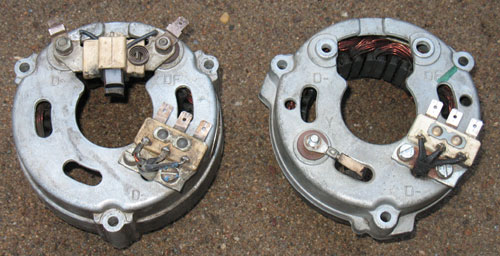
/5: Bosch 0 120 340 001, 105mm, 0.6 Ohm without Y, 14V, 13A
'74: Bosch 0 120 340 002, 105mm, 0.6 Ohm with Y, 14V, 20A
'76: Bosch 0 120 340 005, 107mm, 0.6 Ohm with Y, 14V, 20A
'91-on: same but with 0.8 Ohm windings
All 107mm stators seem to have the same Bosch part number, 0 0 120 340 005 14V20A on the label regardless of resistance.
Voltage regulators
Early voltage regulators were mechanical. Electronic ones appeared in the late '70s (?) and the Wherle electronic one came after that.
- 12 32 1 350 052 (?) Mechanical Bosch
- Electronic Bosch
- 12 32 1 244 409 Red plastic Wherle
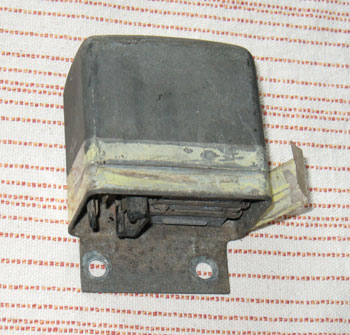
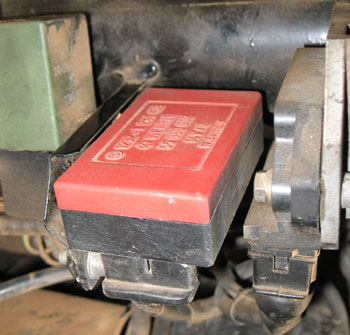
Timing case covers
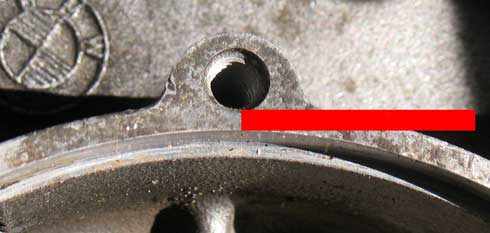
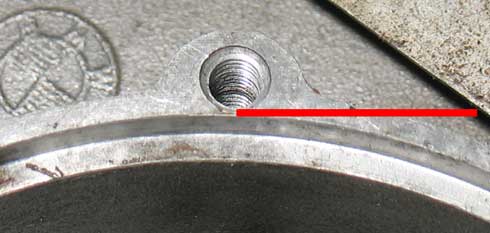
The cover changed for the 1976 model year.
Both versions have the same casting number: 1 250 170 9 A 225. The only diference is that the machining is different; the three support posts are machined to 105mm ID on the early version and 107mm on the later version.
Visually they can be differentiated by the amount of metal remaining to the inside of the bolt hole. The 105mm version has about 1.5mm of metal, and the 107mm version has hardly any; the bolt hole is almost touching the machined surface.
The /5 covers had a smaller camshaft seal hole and fewer openings around the diode board, but those details don't matter here. That casting number is 1 250 170.9 225 (without the A).
Aftermarket
The two main aftermarket systems are the Omega and the Enduralast.
Omega
This is a upgraded version of the existing system, using an Omega diode board, a 71mm rotor and stator and a new voltage rregulator. It's a drop-in replacement other than the need to solder the new stator into your existing stator housing (Motorrad Elektrik will do this for you for free if you send yours in). The current version is rated at 450W maximum output.
Enduralast
This is a permanent-magnet system, so there are no brushes and no reliability issues with the rotor. It charges more at lower RPM but has less ultimate output (estimated to be about 350W). Also it is a bit noisier.
Links & Resources
Motorrad Elektrik - supplier of many Airhead electrical parts, including rotors, diode boards and Omega alternators.
EuroMotoElectrics - supplier of the Enduralast alternator and many other parts.
Joerg Hau's page on voltage regulators

